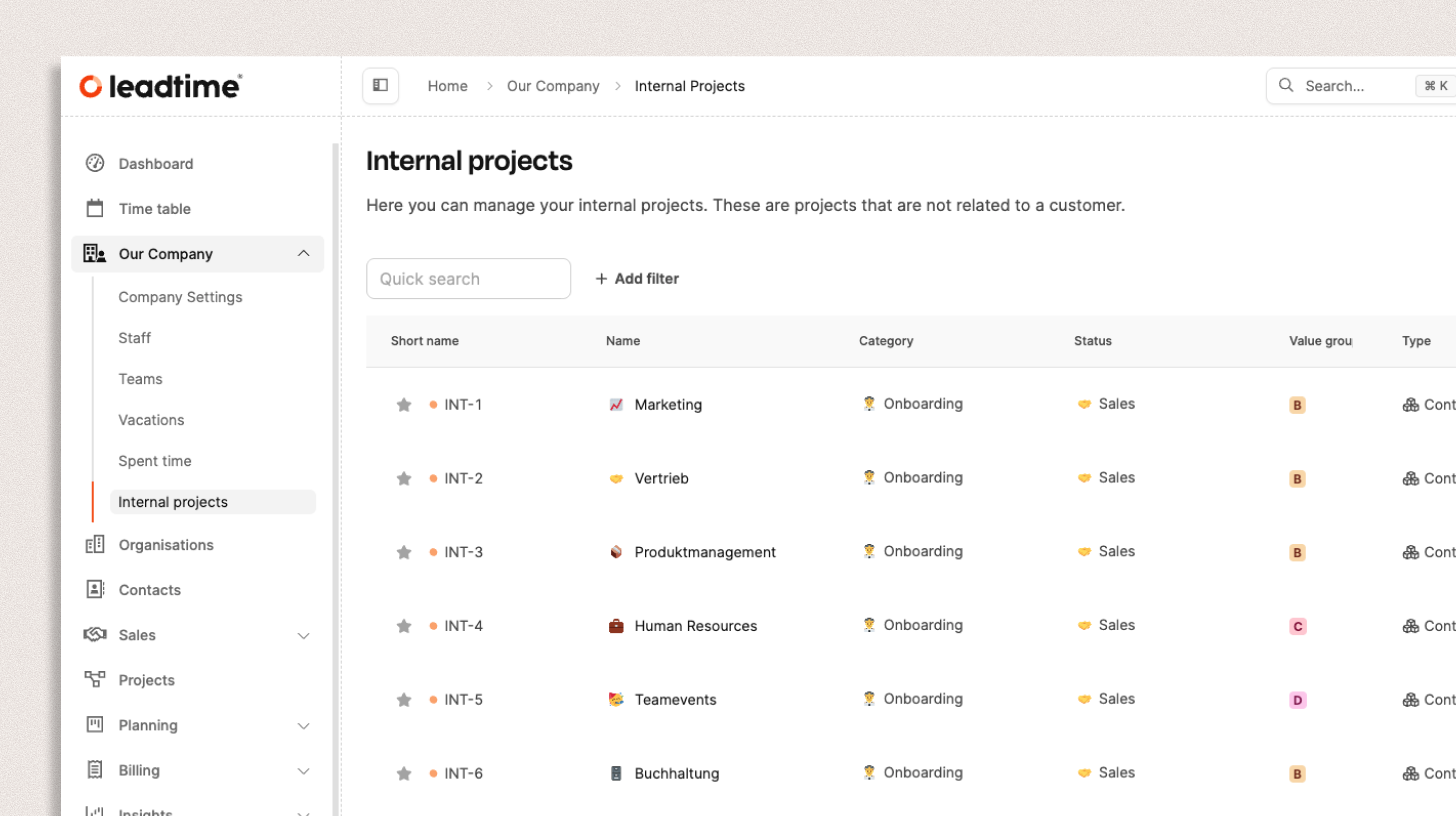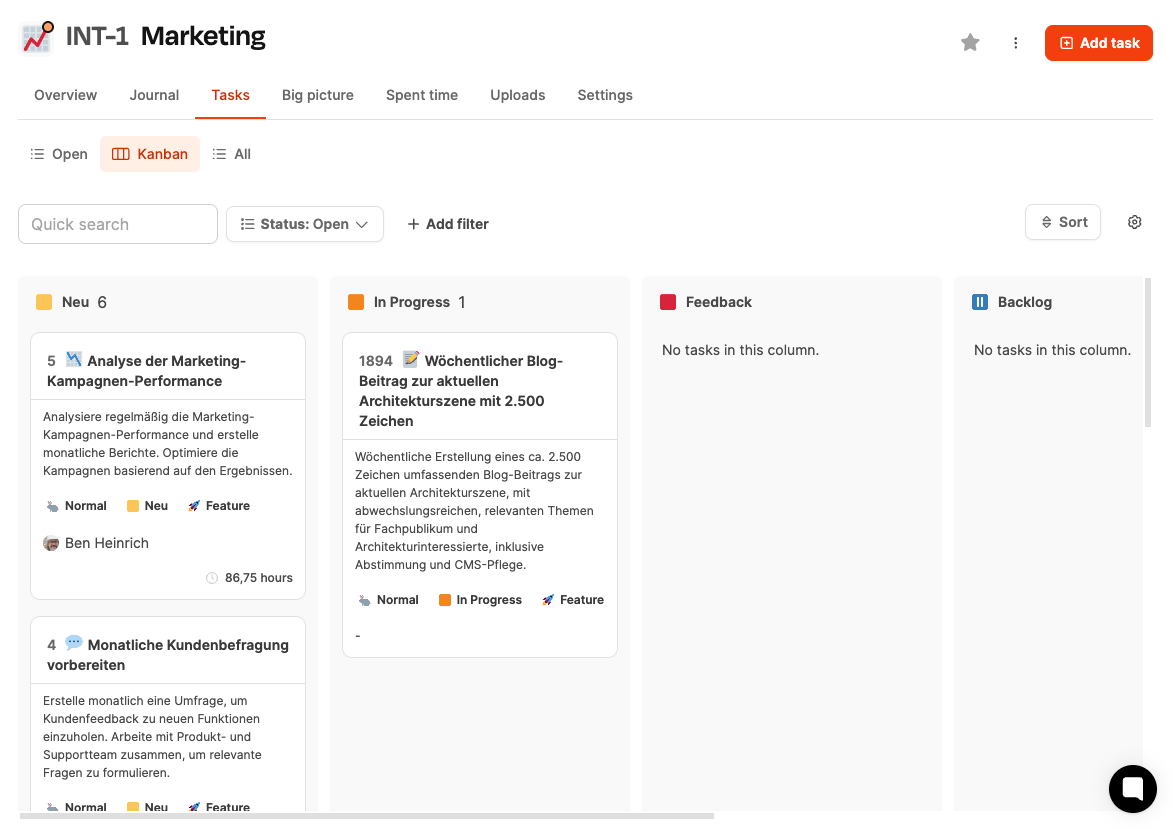In Leadtime, every kind of work is tracked as a project — no matter if it’s for customers or for internal purposes. This setup makes it easy to plan, track, and analyze everything going on in your company. Leadtime always makes a clear distinction between external and internal projects.
All about the project structure in Leadtime

External projects are billable customer projects that bring in direct revenue. They are the core of your company’s operations and usually cover:
Customer orders
Implementation or consulting projects
Maintenance and support contracts
Retainers or ongoing service packages
Goal:
The time tracked in these projects is used as a basis for invoices, quotes, and revenue analyses.
Internal projects are not directly billable, but they're essential for running and developing your company. These include:
Administrative tasks (e.g. accounting, HR, organization)
Sales and marketing activities
Research, development, and product work
Strategic initiatives and internal improvements
Goal:
Working hours in internal projects are used for internal cost control and efficiency assessment – they indirectly contribute to value creation.
Both external and internal projects can be ongoing or one-off:
One-off projects: have a clear goal (e.g. product launch, customer project completion).
Ongoing projects: cover continuous activities (e.g. marketing, support, maintenance).
This way, you keep an eye on both recurring processes and completed initiatives.

Say your company manages customer projects, works on new products at the same time, and handles ongoing internal tasks like marketing and accounting.
A clear internal structure in the area of “Your company / Internal projects” could look like this:
 Sales – Managing leads, cold calling, customer follow-up
Sales – Managing leads, cold calling, customer follow-up
 Marketing – Campaign planning, content creation, website maintenance
Marketing – Campaign planning, content creation, website maintenance
 Accounting – Incoming and outgoing invoices, payment reconciliation
Accounting – Incoming and outgoing invoices, payment reconciliation
 Product development – Planning and implementation of new features or services
Product development – Planning and implementation of new features or services
This structure makes sure that internal working hours can be tracked precisely and operational tasks stay separated from strategic projects.
Record activities: All recurring tasks (e.g. acquisition, bookkeeping) should be documented via tickets in the relevant internal project.
Time booking without ticket: For similar activities (e.g. bookkeeping), employees can book their working hours directly to the project.
Single projects for goals: For clearly defined internal initiatives (e.g. product development), it makes sense to have a separate project with defined work packages.
Analysis and reporting: Internal projects help make internal efforts visible and evaluate long-term efficiency.